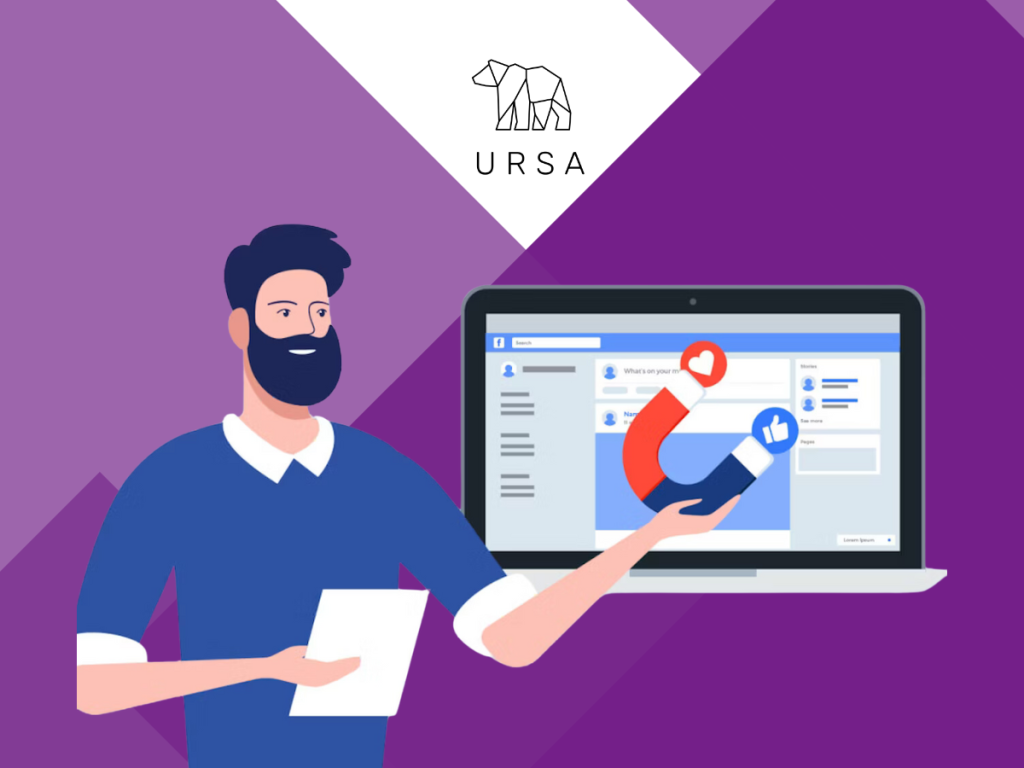
With over 2.8 billion active users worldwide, Facebook not only stands as an essential social platform but also as an exceptionally powerful marketing tool.
To make the most of Facebook advertising, it’s essential to comprehend how the platform functions and develop a well-defined plan. Unfortunately, many advertising campaigns fail to reach their full potential due to easily avoidable mistakes.
To assist you in creating successful campaigns, our team shares the six most common errors made by advertisers.
1. Targeting Too Broadly

A) Targeting a large number of people
When defining an audience on Facebook, the platform provides an estimate of the number of people you can reach. It’s essential not to exceed a certain number, as you risk including individuals who are not relevant to your campaign. On the contrary, too narrow targeting can also be problematic, as it may limit Facebook’s algorithm and prevent it from moving out of its learning phase, in addition to increasing the CPM.
B) Too many ad sets
It’s common to see campaigns with an excessive number of ad sets compared to the allocated budget. This can unnecessarily prolong the algorithm’s learning phase. In contrast, limiting yourself to a single ad set diminishes the opportunity to test different audiences and determine the most effective ones.
Best practice: start with a minimal budget of five dollars per day. By gradually increasing your budget, you can add more ads and ad sets to test.
2. Failure to Install a Pixel
A) Absence of the Facebook pixel
Installing the Facebook pixel is essential for any advertising campaign, as it provides insight into how visitors interact with your website after viewing your ad. Without this feature, achieving a meaningful marketing objective becomes unattainable, as algorithms cannot adjust ads to your actual needs and goals.
Pour savoir comment installer un pixel Facebook, consultez ce lien : https://bit.ly/46RuYjv.
B) Lack of event tracking
Configuring event tracking is also essential. It ensures a more detailed analysis of user actions on your website (such as purchases, sign-ups, or downloads) after interacting with your ads. The absence of this configuration significantly limits the effectiveness of your campaigns.
To learn how to configure event tracking, visit: https://bit.ly/3RiZgXJ.
3. Choosing Inappropriate Objectives
Another common mistake is choosing campaign objectives that do not align exactly with your marketing goals. For example, if your goal is to boost website visits, choosing a landing page view objective would be much more precise and appropriate than selecting to increase the number of clicks.
Additionally, opting for a conversion objective at the beginning of the campaign is often suboptimal. It’s wise to start with an awareness or website traffic campaign to build an engaged audience ready to convert.
4. Keeping Automatic Placements
A) Problematic formats
Retaining automatic placements is rarely the ideal approach, as the visuals used may not always be suitable for all placements, leading to format incompatibility. On certain platforms, this can reduce the visual impact and effectiveness of your ads.
B) Limited analysis
Automatic placements can complicate the analysis and optimization of ad performance on specific placements. Selecting your placements manually provides the opportunity to understand which platforms work best for your audience and make targeted adjustments to improve performance. Considering that some placements are less visible, it’s better to allocate your budget to highly visible ones.
C) Exposure to inappropriate audiences
The risk of your ads being exposed to irrelevant audiences is another drawback of automatic placements. For instance, advertisements meant for older people may end up on Instagram, where they are less likely to engage with them. This can result in wasting your advertising budget on users less inclined to respond to your offer.

5. Underestimating the Importance of Ad Text
The effectiveness of a Facebook ad depends not only on your visuals but also on the accompanying text. It’s important to avoid having too much text on the image itself, as this can result to algorithmic penalties by Facebook. It’s preferable to concentrate important information in the ad text.
Key elements to consider:
 Headline: The first sentence of your ad is crucial, as a good headline encouragesusers to click on the three dots (See more) to read the rest of your message.
Headline: The first sentence of your ad is crucial, as a good headline encouragesusers to click on the three dots (See more) to read the rest of your message.- Title: Should be catchy and relevant. Titles that highlight the offer or value proposition tend to achieve better results. They should immediately grab attention and precisely evoke the purpose of the ad.
- Call-to-action button: Don’t forget to include a clear and direct call-to-action button. This button should guide the user to take the next action, whether it’s learning more, signing up, purchasing, or any other desired action.
By paying special attention to these elements, you can significantly increase the impact and effectiveness of your Facebook ads.
6. Directing to an Unoptimized Landing Page
The choice of landing page is a crucial aspect of Facebook advertising campaigns that often goes unnoticed. Ads often redirect to the site’s homepage, but this is not always the best strategy.
The ad’s objective should directly align with the landing page’s strategic choice. For example, if the ad aims to promote a specific product or a limited-time offer, the landing page should highlight that specific product or offer.
In order to facilitate conversion, each landing page should have essential elements like a visible phone number and contact form.
Conclusion
If you avoid these six common errors in your Facebook advertising campaigns, you can greatly improve their effectiveness and impact. Every detail plays a role in transforming your ads into powerful and effective marketing tools, from carefully selecting your audience to making judicious choices for the landing page.